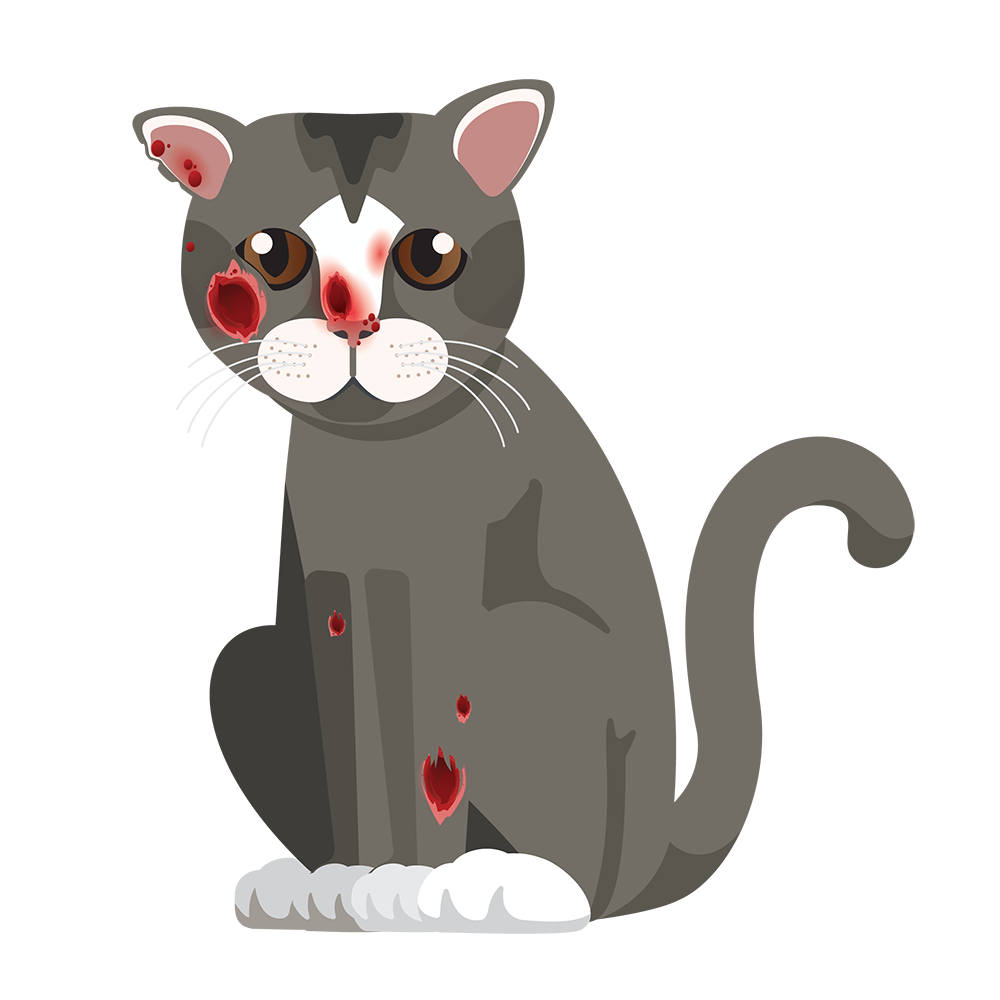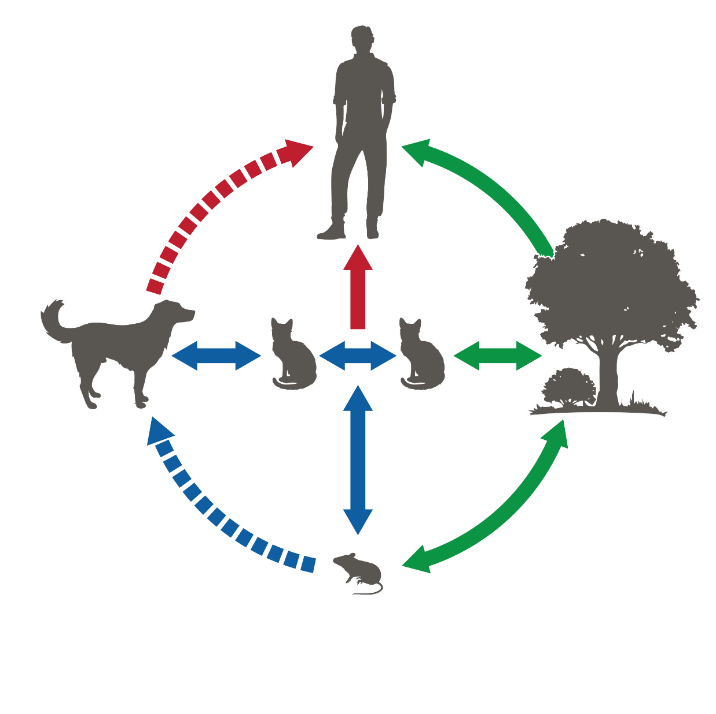Sporothrix brasiliensis
Sporothrix brasiliensis is a fungus that is increasingly causing disease in cats and people in Brazil and parts of South America.
Sporothrix brasiliensis has been spreading over time
Before 1990, Sporothrix brasiliensis was only known to be in Southeastern Brazil, near Sao Paulo and Rio de Janeiro. By 2018, cases of sporotrichosis—a fungal infection caused by S. brasiliensis—had been identified in eight more states across southern and eastern Brazil. Between 1998–2016, over 4,500 human cases spread by cats were identified. 1 S. brasiliensis was also recently found in Argentina and Paraguay, and there is concern that it could spread to other countries through the movement of sick animals. 2,3
S. brasiliensis is causing widespread infections in Brazil and expanding into neighboring countries. Cases have not been detected in the United States to date. However, the experience in Brazil shows that once established in a population, these infections may spread widely. Given the travel and exposure patterns of humans and cats, US physicians and veterinarians need to be prepared to recognize and treat infections caused by S. brasiliensis.
Learn more about Sporothrix brasiliensis:

S. brasiliensis can spread directly from an infected animal to a person or to other animals and make them sick with sporotrichosis. 4 People can get sporotrichosis caused by S. brasiliensis from the bite or scratch of an infected cat. Other species of Sporothrix rarely spread through animal contact. When people get S. brasiliensis infections from cats, the symptoms are similar to or more severe than those of sporotrichosis caused by other species of Sporothrix. 5
Sporothrix brasiliensis in cats
Cats with sporotrichosis often have lesions on their faces, often around the nose. These lesions develop from wounds that occur during fights with an infected cat. Cats licking infected wounds on other parts of their bodies can also transfer the fungi to their faces and mouths. 6



Sporotrichosis infections are often difficult to treat with antifungal medication. 7 The main treatment is itraconazole, given by mouth at 8.3 to 27.7 mg/kg/day every 24 hours until signs and symptoms disappear. However, treatment takes many months, the infections often fail to respond to treatment, and side effects are common. 8
Prevention
Veterinarians, animal caretakers, and the public should be careful when handling cats in Brazil and neighboring countries, especially those that appear sick or have obvious lesions. 9 People can get sporotrichosis from infected cats even if the cat does not scratch or bite them. Some people have gotten sporotrichosis after touching an infected cat and then touching their eyes. 10 Be cautious with unfamiliar animals and approach cats with care, even if they appear friendly. Limit contact between domestic and feral cats, especially those that appear sick.
Learn more about staying healthy around pet cats.
- Gremião IDF, Miranda LHM, Reis EG, Rodrigues AM, Pereira SA. Zoonotic epidemic of sporotrichosis: cat to human transmission. PLoS Pathog. 2017 Jan;13(1): e1006077.
- Córdoba S, Isla G, Szusz W, Vivot W, Hevia A, Davel G, Canteros CE. Molecular identification and susceptibility profile of Sporothrix schenckii sensu lato isolated in Argentina. Mycoses. 2018 March;61(7):441-448.
- García Duarte JM, Wattiez Acosta VR, Fornerón Viera PML, Aldama Caballero A, Gorostiaga Matiauda GA, Rivelli de Oddone VB, et al. Esporotricosis trasmitida por gato doméstico. Reporte de un caso familiar. Rev Nac Itauguá 2017; 9:67–76
- Rodrigues AM, de Hoog GS, de Camargo ZP. Sporothrix species causing outbreaks in animals and humans driven by animal-animal transmission. PLoS Pathog. 2016 July;12(7): e1005638.
- Almeida-Paes R, Oliveira MME, Freitas DFS, et al. Sporotrichosis in Rio de Janeiro, Brazil: Sporothrix brasiliensis is associated with atypical clinical presentations. PLoS Negl Trop Dis. 2014;8: e3094.
- Schubach TMP, Schubach AO, Reis RS, Cuzzi-Maya T, Blanco TCM, Monteiro DF, et al. Sporothrix schenckii isolated from domestic cats with and without sporotrichosis in Rio de Janeiro, Brazil. Mycopathologia. 2001;153:83–6.
- Gremião IDF, Rodrigues AM, Schubach TMP, Figueiredo ABF, Cavalcanti MCH, Pereira SA. Feline sporotrichosis: epidemiological and clinical aspects. Med Mycol. 2014 Dec;53(1):15-21.
- Schubach, TMP, Schubach A, Okamoto T, Barros MBL, Figueiredo FB, Cuzzi T, et al. Evaluation of an epidemic of sporotrichosis in cats: 347 cases (1998–2001). JAVMA. 2004 May;224(10):1623-1629.
- Rodrigues AM, Teixeira MM, de Hoog GS, Schubach TMP, Pereira SA, Fernandes GF, et al. Phylogenetic analysis reveals a high prevalence of Sporothrix brasiliensis in feline sporotrichosis outbreaks. PLoS Negl Trop Dis. 2013 Jun;7(6): e2281.
- Jackson JR, Cohen A. Human sporotrichosis outbreak caused by Sporothrix brasiliensis in a veterinary hospital in Southern Brazil. EyeWorld. Academic Grand Rounds: Dean McGee Eye Institute, 2015 Mar, 2015 Mar.